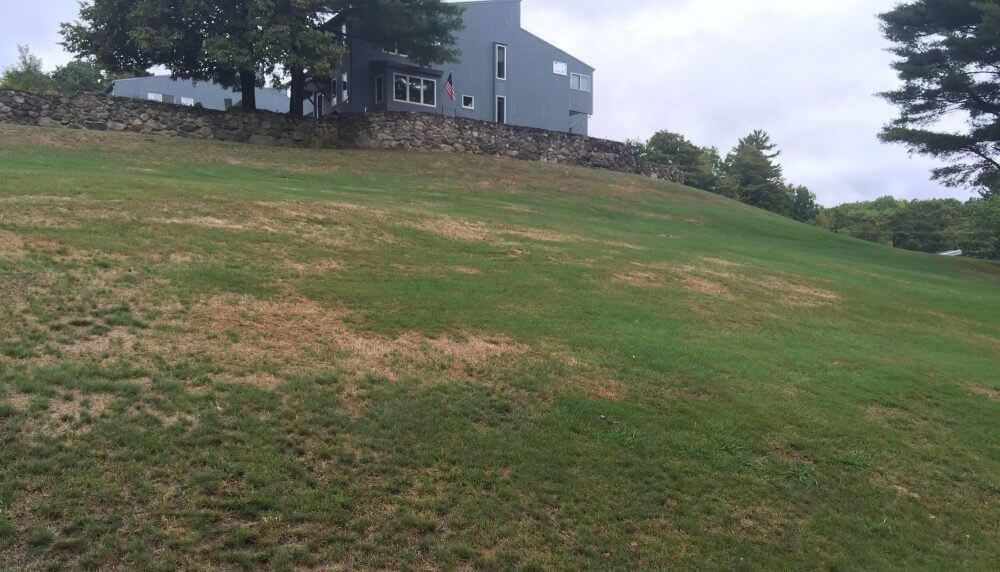I’ve seen summers come and go for decades in the lawn business but rarely have I seen so much turf damage simply from the weather. 2016 is going to rank up there as one of, if not the driest extended summer droughts, especially in Southern NH, of the last 100 years. Let that sink in.
Drought
Dry weather by itself causes lots of browning and when the weeks turn into months, permanent turf loss occurs – from the small to the large. I have seen many lawns in NH that have permanent turf loss simply as a result of no rain. While many grasses can tolerant and even protect themselves from dry weather, there comes a point when the plant simply expires from a lack of rainfall. The crown, the living part of the grass plant dies, leaving brown patches in your lawn.
Unable to water, many home owners are now facing minor to extensive turf loss simply because of the weather- not bugs, not disease, not weeds – the weather. And the weather my friends, no one can control. While the total extent of the drought has not yet been fully realized since recovery is still underway from recent rain, there is no doubt that lawn damage is real, widespread and many lawns will not just come back.
Other Factors
What kinds of grasses you have in your lawn, soil type, extent of shade, and usage all became even more important in a drought scenario. Whether your lawn is treated or not treated, how you cut your lawn (low/high, time of day, frequency) in even the early summer months are factors that can make a difference.
Why So Many Weeds?
Here is what happened and why your lawn may look beat up and weed infested. You might even being saying it’s the worst your lawn has looked in your life. As your lawn browned-out and went dormant, the soil heated up. Even if you had your lawn treated for crabgrass and weeds in the spring, the high heat and dry soil quickly degraded those normally effective products.
Hot soil lends itself to weed seeds germinating in epic proportions as July faded into an even drier August. Dormant turf became open space for massive weed infestations, ranging from crabgrass to spotted spurge and a host of others. On the plus side, if your lawn was treated for insects in the early spring, such as grubs or chinch bugs, more damage was likely prevented. Sigh.
Unfortunately, spraying for these tough summer weeds during hot/dry weather not only has a low success rate, the spray actually causes further stress by root pruning any turf still green and growing. Lawn care companies were caught up in a perfect storm: brown grass with hard-to-control weeds. A light touch or doing nothing until September was a prudent tactical move.
Fall Repair
Now that NH and VT are receiving some moisture, and the annual weeds are dying and will be dead by October in most areas – assessing the damage, repairing lawns, and spraying for weeds is now in full swing. Fall is the time to clean up broadleaf weeds and address dead grass. As you prepare for 2017, be sure to include more drought-tolerant grasses in your renovation plans and remember that fall is the best time. (see my blog post Organic Fall Lawn Care, August 29.)
So if you had your lawn treated or not – don’t be disappointed by what you see out your window, because now you understand why. And the “why” is important because beyond mowing, the weather plays a huge roll in any crop – lawns included. As always, starting the season with a healthier lawn can withstand the kind of weather we had in 2016, as seen in thousands now returning to a normal green color.

Why 2016 Was A Terrible Year For Grass
Tags:
chippers
, Crabgrass
, Fertilizer
, lawn repair
, seeding
, weeds
, brown grass
, dry lawn
, upper valley lawn care
, nh lawn care
, vt lawn care
, fall mowing
, broadleaf weeds
, drought

